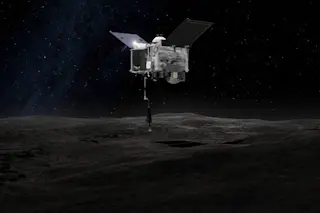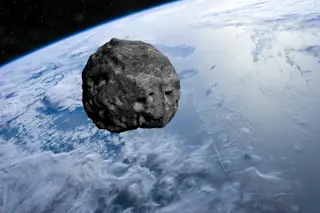In this illustration, OSIRIS-REx approaches asteroid Bennu in preparation of snagging a sample. (Credit: NASA's Goddard Space Flight Center Conceptual Image Lab) Last week, NASA launched its newest spacecraft on a mission to sample an asteroid and send that collected rock and dust back to Earth. The OSIRIS-REx spacecraft (short for Origins, Spectral Interpretation, Resource Identification, Security-Regolith Explorer) is on a two-year journey to Bennu, an asteroid about 1,600 feet (290 meters) wide and orbiting the Sun in a similar orbit to Earth’s. The spacecraft will get to Bennu in August 2018, and spend the next two years surveying the space rock. It will produce a range of different types of maps — photographic, altitude measurements, mineral maps, heat maps — and from those data, scientists will chose a location on the asteroid to snag samples. In the summer of 2020, the spacecraft will then approach the chosen location and ...
OSIRIS-REx and its asteroid sampling comrades
Discover the mission of the OSIRIS-REx spacecraft as it journeys to sample asteroid Bennu and return materials to Earth.
More on Discover
Stay Curious
SubscribeTo The Magazine
Save up to 40% off the cover price when you subscribe to Discover magazine.
Subscribe













